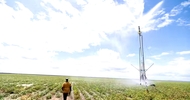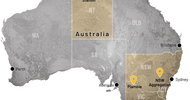
Global land grabbing: some new resources
Those of you interested in land in Zimbabwe will be interested in what’s happening elsewhere in the world. This week’s blog focuses on some wider themes, and points you towards some useful new resources.
Last week 200 delegates assembled in Chiang Mai in Thailand for a major conference on land grabbing, conflict and agrarian-environment transformations in southeast Asia. It was co-organised by the Land Deal Politics Initiative (LDPI), a research network that I helped co-found. The conference marked the next step in this work, aiming to locate debates about land investment and agricultural commercialisation in regional contexts. Southeast Asia has been a focus of the global land rush in the period since the financial-food-energy crisis of 2008, but as elsewhere the dynamics of transformation have evolved in ways that are more complex than the original ‘land grab’ rhetoric.
Due to changes in commodity prices, challenges of infrastructure and investment and shifts in public and policy opinion, large-scale grabs have been less frequent than the ‘multiple pin pricks’ of changes in land use and ownership that have occurred as the new hubs of capital – in the southeast Asia case dominated by China – assert their influence in agrarian systems. The conference website has 68 papers already posted, and there were around 100 presentations on all dimensions of land and environmental change in the region at the event. Sadly I missed it, but with me you can find out what went on by checking out the papers and abstracts.
Another new set of resources comes in a special issue of the Journal of Peasant Studies (JPS) on land grabbing and ‘politics from below’. This emerged from the LDPI conference at Cornell a few years back. The collection documents the varied forms of resistance – active and more passive – that have occurred, and how this is refracted through local political dynamics. The special issue is free to download through a special link, which is available for the coming months. There are papers from Mexico, Guatemala, Ethiopia, Madagascar, Mozambique and many, many more. It is well worth a read. I was one of the editors, and the papers are really fascinating.
The themes of land and agrarian struggle are continued in two further JPS special issues that marked the journal’s 40th anniversary, and most articles are again free to download. As the journal with the top ‘impact factor’ in development studies and anthropology, it is increasingly seen as one of the key journals for debates on agrarian change. The anniversary issues include a series of new articles reflecting on new directions in agrarian political economy (lots of good articles – I was an editor on this one too!), as well as a dedicated issue on the controversial debates surrounding approaches to food sovereignty, including an excellent piece by Henry Bernstein, offering a ‘sceptical view’, one which I largely share.
Finally, advance notice for anyone with a particular interest in Africa, the book Africa’s Land Rush: Rural Livelihoods and Agrarian Change, edited by Ruth Hall, Dzodzi Tsikata and myself, will be out in a month or so, and includes chapters by African researchers from seven different countries. The research was carried out as part of the land theme of the Future Agricultures Consortium. It is published by James Currey in the African Issues series, and is available for advance order.
The ‘land grab’ debate continues to evolve. Unlike when we held the first LDPI-convened international land grab conference at Sussex in 2011, today there is much more empirical data, as witnessed by the veritable explosion of publications (what Carlos Oya calls the literature rush). This allows a more balanced assessment, and one that can differentiate patterns regionally, across types of agroecologies and crop types, and in relation to different forms of investment. Several years on, a different dynamic is evident, with a focus on the dynamics of agrarian capital, from diverse sources, on agricultural commercialisation, land dispossession and forms of conflict and resistance.
This post was written by Ian Scoones and appeared first on Zimbabweland
w’











